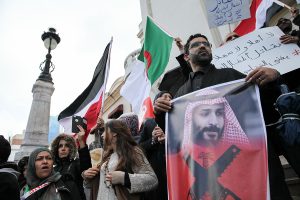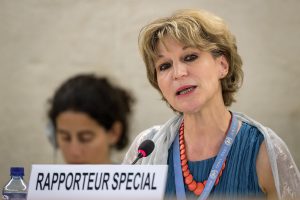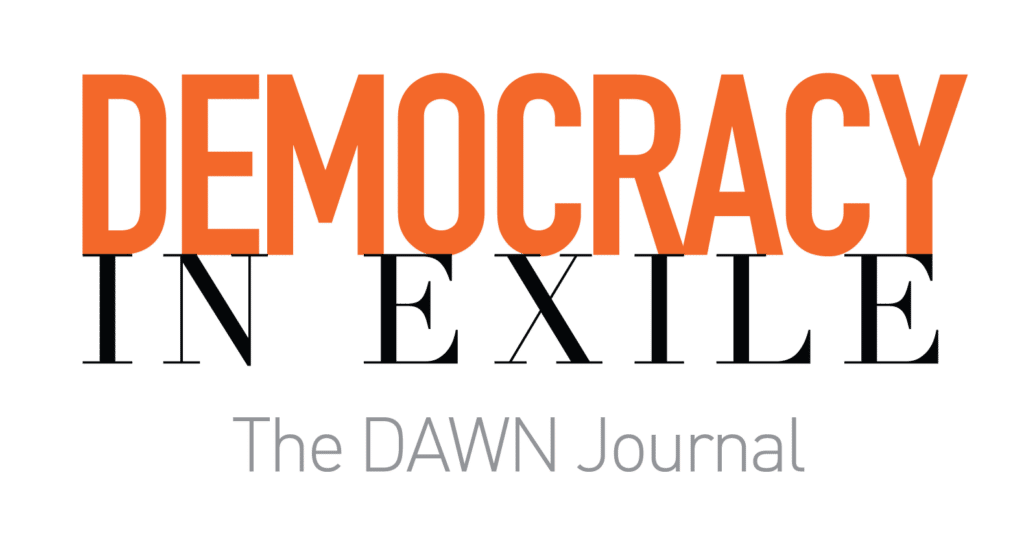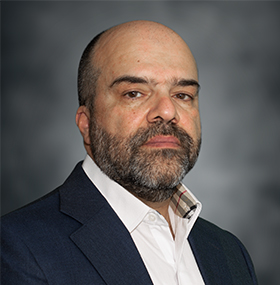Arie Amaya-Akkermans is a writer, art critic and independent researcher based in Italy. His work focuses on the history of archaeology, contemporary art and the politics of memory in the Middle East.
There's no story about Lebanon this week that can be updated fast enough. The assassination of Hezbollah chief Hassan Nasrallah in a huge Israeli airstrike on southern Beirut capped a series of destabilizing events, including the astonishing remote explosion of thousands of pagers across Lebanon and the massive Israeli bombardments on Sept. 23 that killed 558 people, the deadliest day in Lebanon since the end of the civil war in 1990.
The war of attrition on the Israel-Lebanon border between Hezbollah and the Israeli military, fought against the backdrop of Israel's war in Gaza, has erupted into something far more devastating, with an Israeli ground invasion of southern Lebanon now underway. The power vacuum left in the wake of Nasrallah's assassination might well be the most dangerous moment in Lebanese history, with more than a million people displaced by continuing Israeli airstrikes. Lebanese civilians are fleeing north, and into neighboring Syria, bringing back memories of similar waves of people fleeing Israel's invasion of Lebanon in 1982 and again during the 34-day war between Israel and Hezbollah in 2006.
In a situation like this, it might seem obvious that cultural life in the Lebanese capital would come to a standstill. The Sursock Museum, one of the country's most prominent cultural institutions, which reopened only last year after a three-year closure following the deadly Beirut port explosion, announced this week that its doors would stay shut until further notice. The Beirut Art Center, a private institution founded in 2009, announced on social media that it would close temporarily. Yet some of the city's art and cultural institutions still remain open for another purpose many Lebanese know all too well: to coordinate relief activities and collect donations for those in need, particularly people displaced from southern Lebanon by Israeli attacks.
Some art and cultural institutions remain open for another purpose many Lebanese know all too well: to coordinate relief activities, particularly for people displaced by Israeli attacks.
- Arie Amaya-Akkermans
On vibrant Hamra Street, Metro al-Madina, one of Lebanon's most celebrated independent theaters, has turned into a donation hub for basic supplies for the displaced. The Arab Image Foundation, which is dedicated to the preservation of and research on Arab photography and was founded in 1997 by photographers Fouad El Khoury, Samer Mohdad and artist Akram Zaatari, has gone one step further. It has decided to remain open to anyone who needs it, as a place where people can use the internet, charge their devices, gather in air-conditioned rooms or find refreshments and toys for children.
But the displaced in Beirut will need more than informal aid distributed like this. Scores of families from all over the country have fled to the capital's seafront, in an attempt to escape Israeli bombings that have targeted not just southern Lebanon or Beirut's southern suburbs, but central Beirut as well.
Art galleries in Beirut have always been skilled in maneuvering the country's uncertainties, with many opening and closing and re-opening again during the civil war as the circumstances permitted. But now, many galleries have cautiously chosen to close their doors. Mar Mikhail's Marfa Projects, perhaps Lebanon's most visible gallery for young artists, opened a new exhibition on Sept. 17 for photographer Mohamad Abdouni, whose recent body of work focuses on inner loneliness and the quest for belonging. But the show opened without a reception; it was the same day of the pager explosions. The gallery has since had to close until further notice, although it is still planning on bringing a presentation of Lebanese artists Seta Manoukian and Paola Yacoub to Art Basel Paris in October.
On the same day as the pager explosions, Sfeir-Semler, an international gallery with spaces in Beirut and Hamburg, also announced the suspension of its activities in Beirut. Inside the closed spaces of its two galleries in the port-side district of Karantina and in downtown Beirut, there are two exhibitions by conceptual artist Walid Raad, the invitations for which begin with this ominous line: "Another exhibition at another foreboding historical moment." It's almost as if the art is in conversation with the violence of the present.
Architect and curator Ala Tannir had organized a group exhibition at the modernist Duraffourd Building in the central neighborhood of Ain El Mreisseh, slated to open on Sept. 26, and supported by the Graham Foundation and the Arab Fund for Arts and Culture. The exhibition is installed and ready to open, but it has also been postponed until further notice.
The National Museum of Beirut was set to inaugurate its new annex, the Nuhad Es-Said Pavilion for Culture, built by the family of prominent Islamic art collector Nuhad Es-Said, whose collection of Islamic metalwork is regarded among the best in private hands in the world. The pavilion was slated to open with a large group exhibition, curated by the Beirut Museum of Art, on Sept. 19, but two days earlier, following the pager explosions, the annex administration announced that "due to the circumstances in the country," the opening would be postponed.
It is a loss for cultural life in Beirut that perseveres, and still thrives, against all odds. As you cross through the corridor connecting the National Museum to the annex, you are confronted with the museum's place in the history of Lebanon's civil war. In 1975, archaeologist Emir Maurice Chehab, the museum's director, and his staff began fortifying the museum and building concrete slabs under which its artifacts would be hidden, not knowing how long the war would last. (This heritage-saving story has near mythical status in Lebanon, although similar efforts took place in Athens during World War II, and in Aleppo after 2011). A piece of Chehab's fortification remains at the museum, encased in glass as a reminder of the civil war, and is therefore also part of the history and design of the new annex. But its public unveiling—and an inaugural show that includes many distinguished Lebanese artists, including Saloua Raouda Choucair, Chafic Abboud, Yvette Achkar, Helen Khal, Aref Rayess and Omar Onsi—will have to wait out this new war.
The resilience and defiance that defined other moments in recent Lebanese history have transformed into a nervous but tragic acceptance of the facts.
- Arie Amaya-Akkermans
Meanwhile, on social media, Lebanese artists, both at home and abroad, wonder again about the future of their country. Rabih Mroué and Lina Majdalanie, two Lebanese performance artists, are being honored this month in Paris in a retrospective by the Festival d'Automne, an annual contemporary arts festival. Their work expresses the idea that violence is not only in the objective outside, but also resides in language, in the body, and in communities of memory. Born in Lebanon in the 1960s, they are part of the generation that grew up through the 15-year civil war. "I realized years later, when there was war with Israel, that some habits were ingrained in our bodies from that time," Majdalanie recently told The New York Times. "We always had a little bag in our bedroom with the essentials in case we had to flee."
Mroué and Majdalanie have often questioned who we become when faced with the experience of near-death, and how we have learned, both culturally and psychologically, to co-exist with grief. These lessons might have come early for the two artists, living in-between or in exile in Berlin, at a moment of terrifying uncertainty for Lebanon.
For now, the resilience and defiance that defined other moments in recent Lebanese history when war broke out—2006, 1982, 1975—have transformed into a nervous but tragic acceptance of the facts. On social media, I've seen many Lebanese taken to reading different works by the late Lebanese artist and writer Etel Adnan. I'm reminded of her poem, "To Be in a Time of War," published only in 2005, but which can be read both backwards into the past and forward into the future, instructing us in the art of waiting for war to either finally end or begin:
"To say nothing, do nothing, mark time, to bend, to straighten up, to blame oneself, to stand, to go towards the window, to change one's mind in the process, to return to one's chair, to stand again, to go to the bathroom, to close the door, to go the kitchen, to not eat not drink, to return to the table, to be bored, to take a few steps on the rug, to come closer to the chimney, to look at it, to find it dull, to turn left until the main door, to come back to the room, to hesitate, to go on…"






































